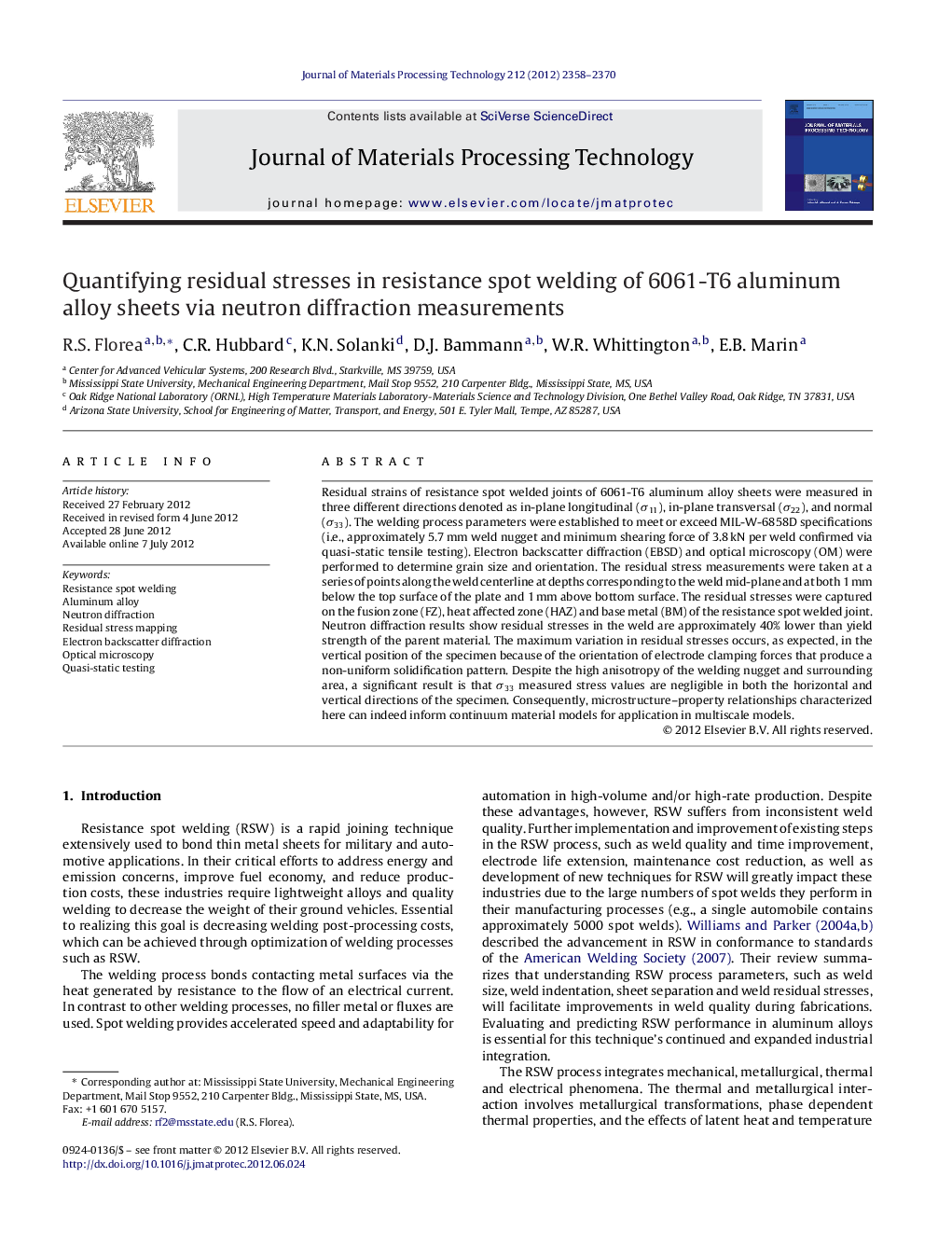| کد مقاله | کد نشریه | سال انتشار | مقاله انگلیسی | نسخه تمام متن |
|---|---|---|---|---|
| 798182 | 903221 | 2012 | 13 صفحه PDF | دانلود رایگان |

Residual strains of resistance spot welded joints of 6061-T6 aluminum alloy sheets were measured in three different directions denoted as in-plane longitudinal (σ11), in-plane transversal (σ22), and normal (σ33). The welding process parameters were established to meet or exceed MIL-W-6858D specifications (i.e., approximately 5.7 mm weld nugget and minimum shearing force of 3.8 kN per weld confirmed via quasi-static tensile testing). Electron backscatter diffraction (EBSD) and optical microscopy (OM) were performed to determine grain size and orientation. The residual stress measurements were taken at a series of points along the weld centerline at depths corresponding to the weld mid-plane and at both 1 mm below the top surface of the plate and 1 mm above bottom surface. The residual stresses were captured on the fusion zone (FZ), heat affected zone (HAZ) and base metal (BM) of the resistance spot welded joint. Neutron diffraction results show residual stresses in the weld are approximately 40% lower than yield strength of the parent material. The maximum variation in residual stresses occurs, as expected, in the vertical position of the specimen because of the orientation of electrode clamping forces that produce a non-uniform solidification pattern. Despite the high anisotropy of the welding nugget and surrounding area, a significant result is that σ33 measured stress values are negligible in both the horizontal and vertical directions of the specimen. Consequently, microstructure–property relationships characterized here can indeed inform continuum material models for application in multiscale models.
► Residual stresses in 6061-T6 aluminum resistance spot welded joints were investigated.
► Neutron diffraction technique was used.
► We used electron back scatter diffraction techniques to analyze weld microstructure.
► Bulk (“in-depth”) residual stresses were measured.
► Entire 3-D residual stress field was quantified.
Journal: Journal of Materials Processing Technology - Volume 212, Issue 11, November 2012, Pages 2358–2370